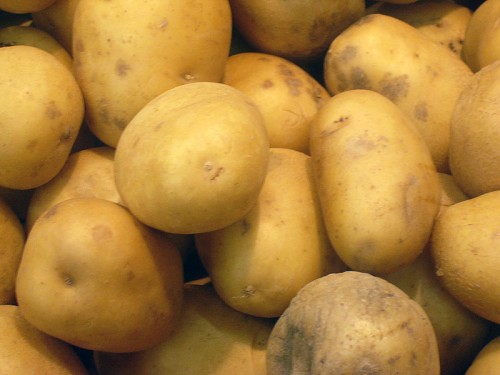Matt chose a mini project for me to work on and experiment to find results. My project was to find was Catalase was and to see if it was in potatoes. Using Hydrogen Peroxide was the key to this experiment as it gave me results to the project.
The Catalase Project
What is catalase?
Catalase is an enzyme normally found in many plant and animal tissues, and it's purpose is to destroy toxic substances which may be introduced into cells. Also, some cells use catalse to destroy cellular debris or worn out organelles.
Credit: chem.lapeer.org/Bio2Doccs/catalaseLab.html
Further in Research
As I was browsing for an experiment that I can conduct, I came across a site that gave great info about enzymes, which I wrote down for future reference. I thought it would be helpful to keep in mind when working on this project.
- Enzymes have five important properties that you should know:
- They are always proteins
- They are specific in their action. (controls reaction/type of)
- They are not altered by the reaction. (This means that an enzyme can be used repeatedly. It also means that enzymes appear neither in the reactants nor in the products of a chemical reaction.
- They are destroyed by heat. (This is because enzymes are proteins, and all proteins are destroyed by heat.) Destruction of protein by heat (or under any extreme conditions of pH or salt concentration) is called denaturation.
- They are sensitive to pH.
Experiment
Once I found an experiment, I gathered my materials and begun.
- Procedure
- Label 3 large test tubes hot, cold and room temperature.
- Cut (3) 1.5 cm^3 pieces of potato with peel removed.
- Use a mortar and pestle to mash/grind up each cube.
- Place all of the mashed potato cubes into each labeled test tube.
- Add 1m of distilled water to each test tube with mashed potato.
- Place the test tube labeled hot in the hot water (100 degrees Fahrenheit) both for 3 minutes.
- Place the test tube labeled cold in the cold water bath (0-4 degree Fahrenheit) for 3 minutes.
- Leave the test tube labeled room temperature in the test tube rack.
- After 3 minutes, remove the test tube from the baths and allow the hot test tube to cool.
- Add 5 ml of H202 to each tube.
- Wait one minute while reaction occurs then measure the height of the bubbles in each tube in cm.
Before hydrogen peroxide has been added
Once I did this experiment twice, I found some slight changes, but usually the same.
- 1st Experiment
- Cold temperature = 5.5 cm (0-4 F)
- Room temperature = 10 cm (73 F)
- Hot temperature = 2 cm (100 F)
- 2nd Experiment
- Cold temperature = 10 cm (0-4 F)
- Room temperature = 8 cm (73 F)
- Hot temperature = 1 cm (99.9 F)
Overall, I found out that potato indeed has catalase, and the results with this experiment was a nice way to see how it takes effect with hydrogen peroxide. "Under the influence of an enzyme called catalase, the hydrogen peroxide is broken down into water and oxygen."


No comments:
Post a Comment